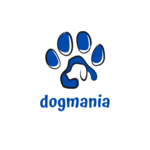Is Your Dog Ready for a Raw Food Diet? Transition Safely in 2024
Transitioning your dog to a raw food diet is a decision that requires careful consideration and planning. This diet, also known as a BARF (Biologically Appropriate Raw Food) diet, aims to mimic the natural diet of wild canines, consisting primarily of raw meat, bones, fruits, and vegetables. Advocates of raw feeding argue that it promotes healthier skin, shinier coats, increased energy, and better overall health. However, transitioning to a raw food diet can be complex and requires a thoughtful approach to ensure your dog’s safety and well-being.
Understanding the Benefits and Risks
Benefits:
2. Healthier Skin and Coat: Many dog owners report shinier coats and healthier skin.
3. Increased Energy Levels: A diet rich in raw proteins can boost your dog’s energy and vitality.
4. Dental Health: Chewing raw bones can help clean your dog’s teeth and promote healthy gums.
Risks:
2. Nutritional Imbalance: Ensuring a balanced diet is more challenging with raw feeding. An imbalance can lead to nutritional deficiencies.
3. Choking Hazards: Raw bones can pose a choking risk or cause internal blockages if not appropriately selected and prepared.
Assessing Your Dog’s Readiness
Age and Health: Puppies, senior dogs, and dogs with compromised immune systems or certain medical conditions may not be ideal candidates for a raw food diet. Always consult with your veterinarian to determine if a raw diet is appropriate for your dog.
Current Diet: If your dog is currently on a commercial diet, transitioning to raw food should be done gradually to avoid digestive upset.
Lifestyle and Environment: Consider your ability to store and handle raw food safely. This includes having enough freezer space and maintaining strict hygiene practices to prevent bacterial contamination.
Steps for a Safe Transition
1. Consult with a Veterinarian: Before making any dietary changes, consult with your vet. They can provide personalized advice based on your dog’s health status and nutritional needs.
2. Educate Yourself: Learn about the components of a balanced raw food diet. This typically includes muscle meat, organ meat, bones, and a small proportion of fruits and vegetables.
3. Start Slowly: Begin by introducing raw food as a small part of your dog’s diet. For example, replace 10% of their current food with raw food and gradually increase the proportion over several weeks.
4. Monitor Your Dog’s Health: Watch for signs of digestive upset, such as diarrhea, vomiting, or constipation. Also, monitor their coat condition, energy levels, and overall demeanor.
5. Ensure Nutritional Balance: A balanced raw diet is crucial. Consider working with a pet nutritionist to develop a meal plan that meets all of your dog’s nutritional requirements.
6. Maintain Hygiene: Handle raw food with care to prevent bacterial contamination. Use separate utensils and surfaces for raw food, and wash your hands thoroughly after handling.
Common Mistakes to Avoid
2. Ignoring Nutritional Balance: An unbalanced diet can lead to health problems. Ensure all essential nutrients are included in the diet.
3. Feeding Unsafe Bones: Not all bones are safe for dogs. Avoid cooked bones and large, weight-bearing bones that can splinter and cause harm.
4. Overlooking Hygiene: Poor hygiene practices can lead to bacterial contamination, posing health risks to both your dog and your family.



leave me your thoughts here